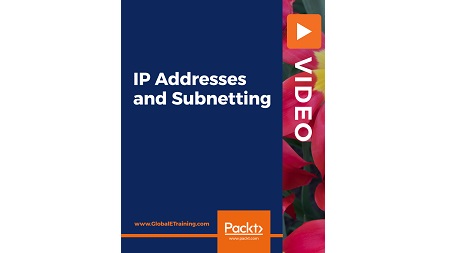
English | MP4 | AVC 1920×1080 | AAC 48KHz 2ch | 4h 10m | 819 MB
A guide on how to subnet effectively with step-by-step instructions
Subnetting and dealing with binary-decimal conversion may seem challenging.
However, this course will take you through the traditional approach to subnetting in a practical manner. You’ll even explore quick and proven methods to subnet effectively. A dedicated section will guide you through essential binary math concepts. In addition to this, you’ll learn binary and decimal conversion. Later, you’ll get up and running with IP address classes.
By the end of this course, you will be well-versed with IP addresses, along with having the skills you need to subnet effectively.
Learn
- Delve into binary math concepts
- Explore essential IP address concepts
- Get to grips with IP address classes
- Understand subnetting – FLSM and VLSM
Table of Contents
01 Course Introduction
02 How to get best out of this course
03 Why is a good understanding of IP Addressing & Subnetting important
04 Binary and Decimal Systems
05 Converting from Decimal to Binary
06 Converting from Binary to Decimal
07 What is a bit 8 Bits 32 Bits
08 Left Zeros Vs Right Zeros
09 Understanding IP Addresses & Some Terms
10 IPv4 & IPv6
11 Network & Host Portions
12 IP Address Classes – A, B, C
13 Subnet Mask, Network Address and Broadcast ID
14 Private and Public IP Addresses
15 What is 127.0.0.1
16 What is Subnetting Why What is FLSM
17 Subnet Bits
18 Class C Subnetting Example – Excel
19 Class C Subnetting Example – Whiteboard
20 Class B Subnetting Example – Excel
21 Class B Subnetting Example – Whiteboard
22 Class A Subnetting Example
23 Understanding the Quick Way Method
24 Example #1 – Class C Network ID (3 bits & 4 Bits)
25 Example #2 – Class B Network ID (Using Excel)
26 Example #3 – Class A Network ID (Using Excel)
27 Subnet Mask – 3 Formats
28 Role of Mask & CIDR
29 Using CIDR Notation
30 VLSM Concepts
31 FLSM Address Overlap Example
32 VLSM Subnetting Example #1 – Class C
33 Congratulations! What’s Next
Resolve the captcha to access the links!